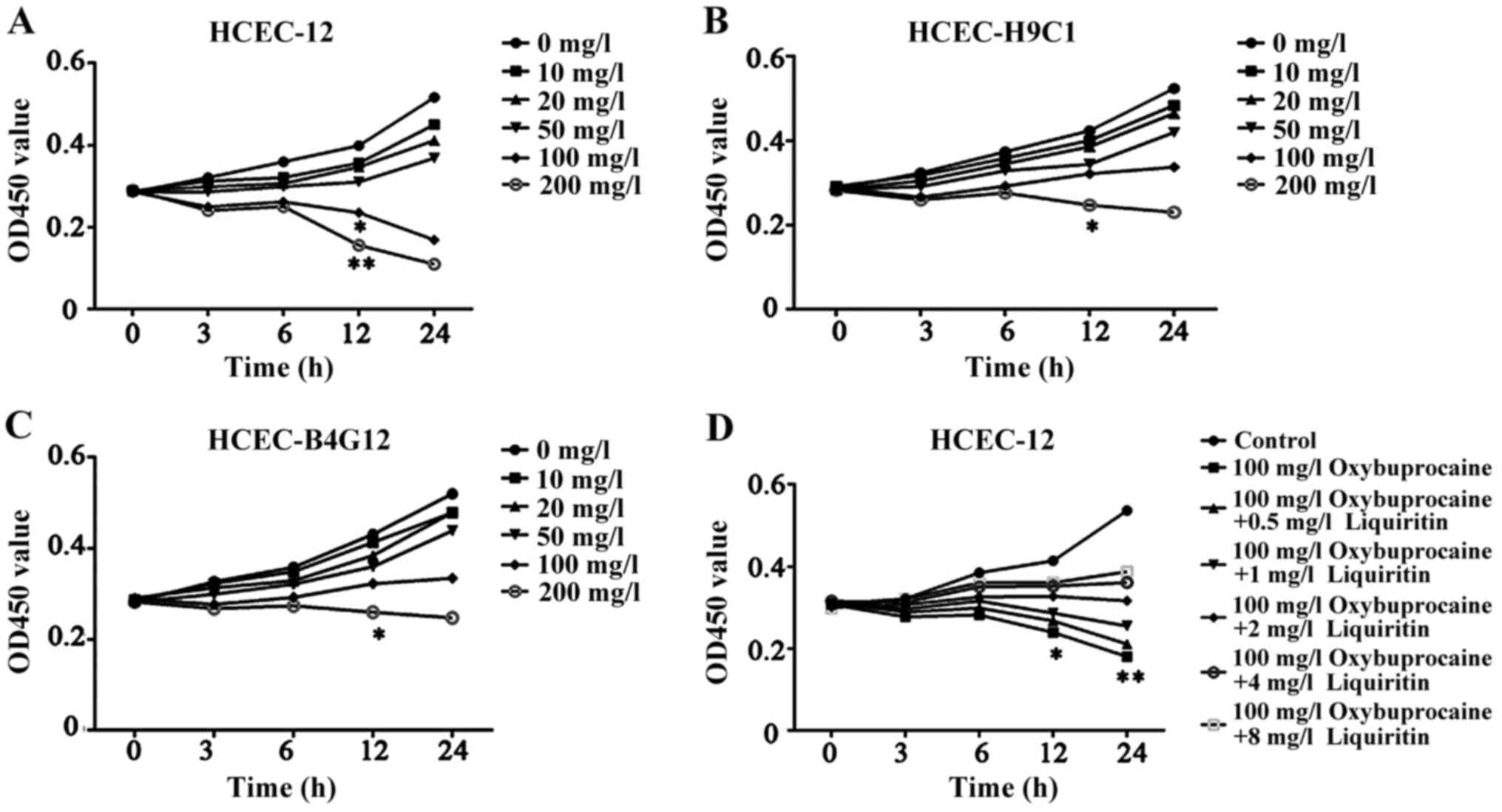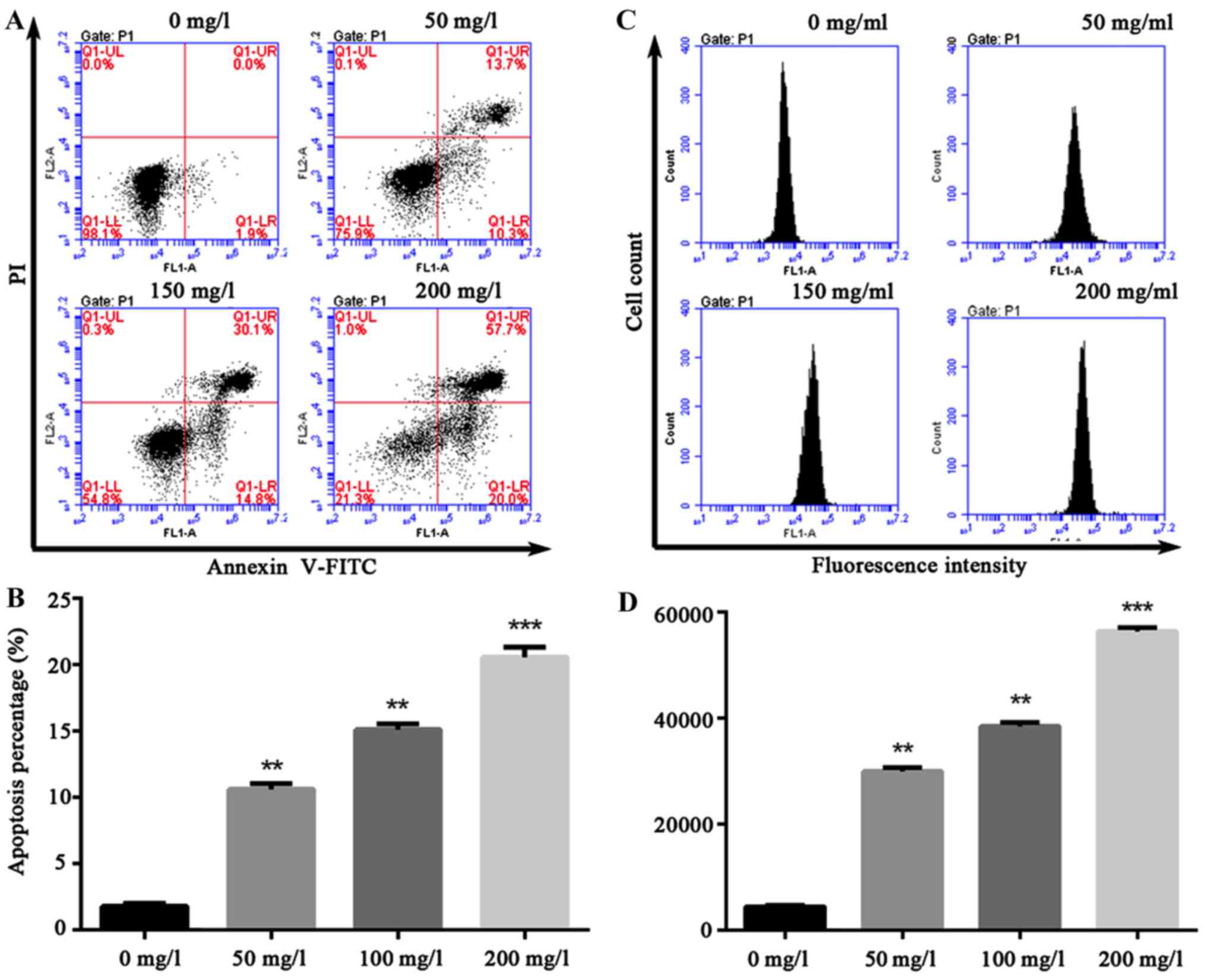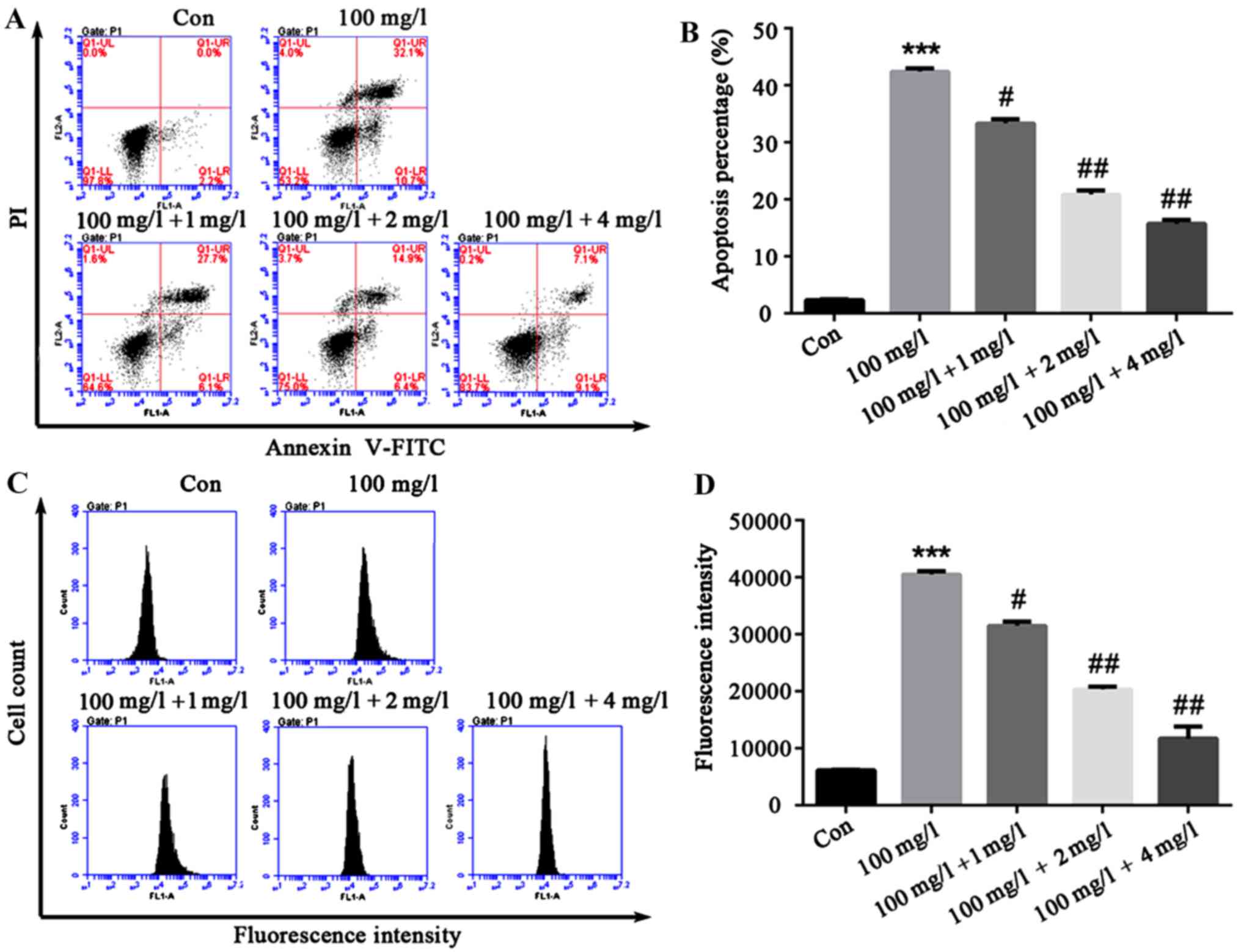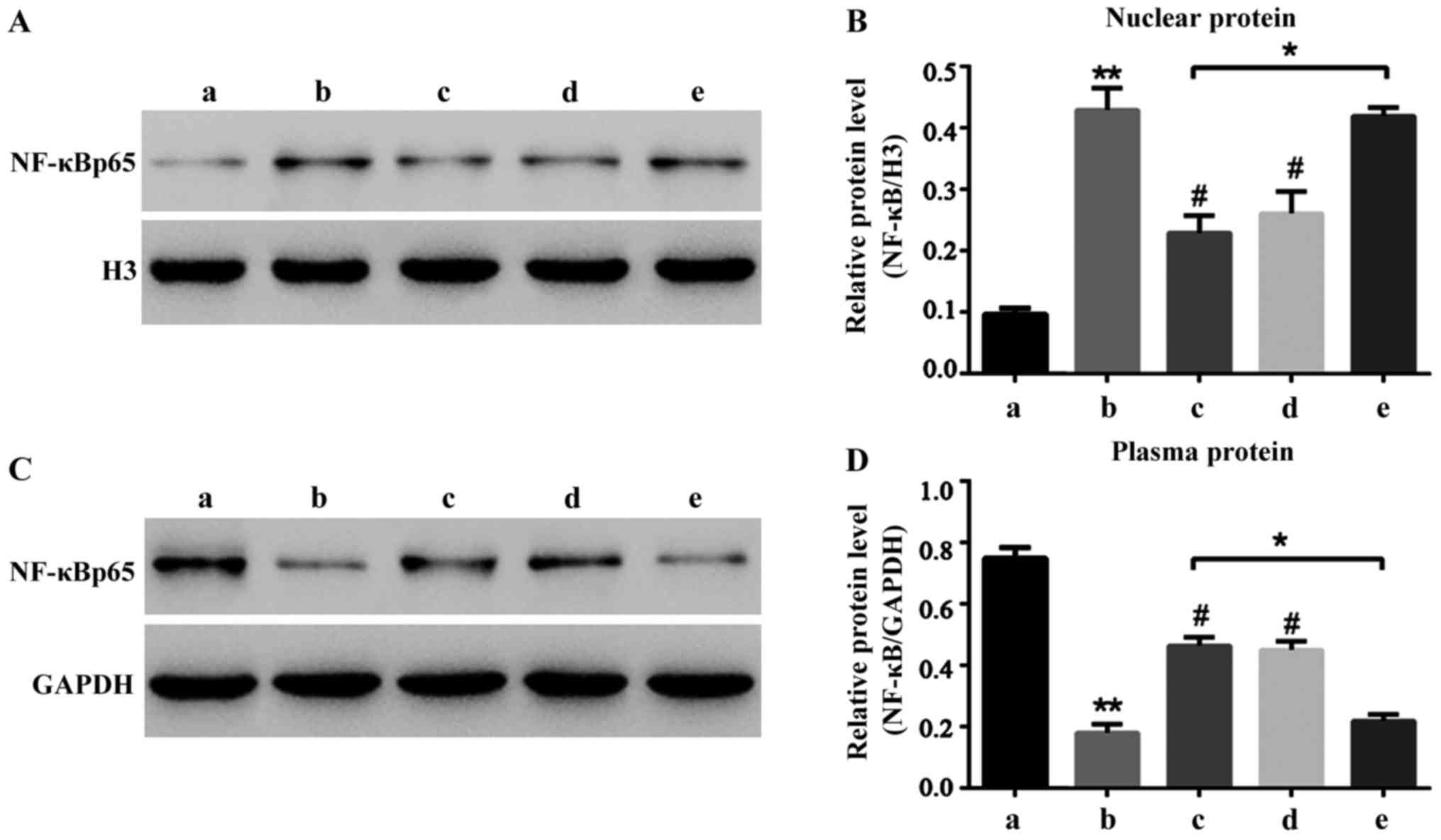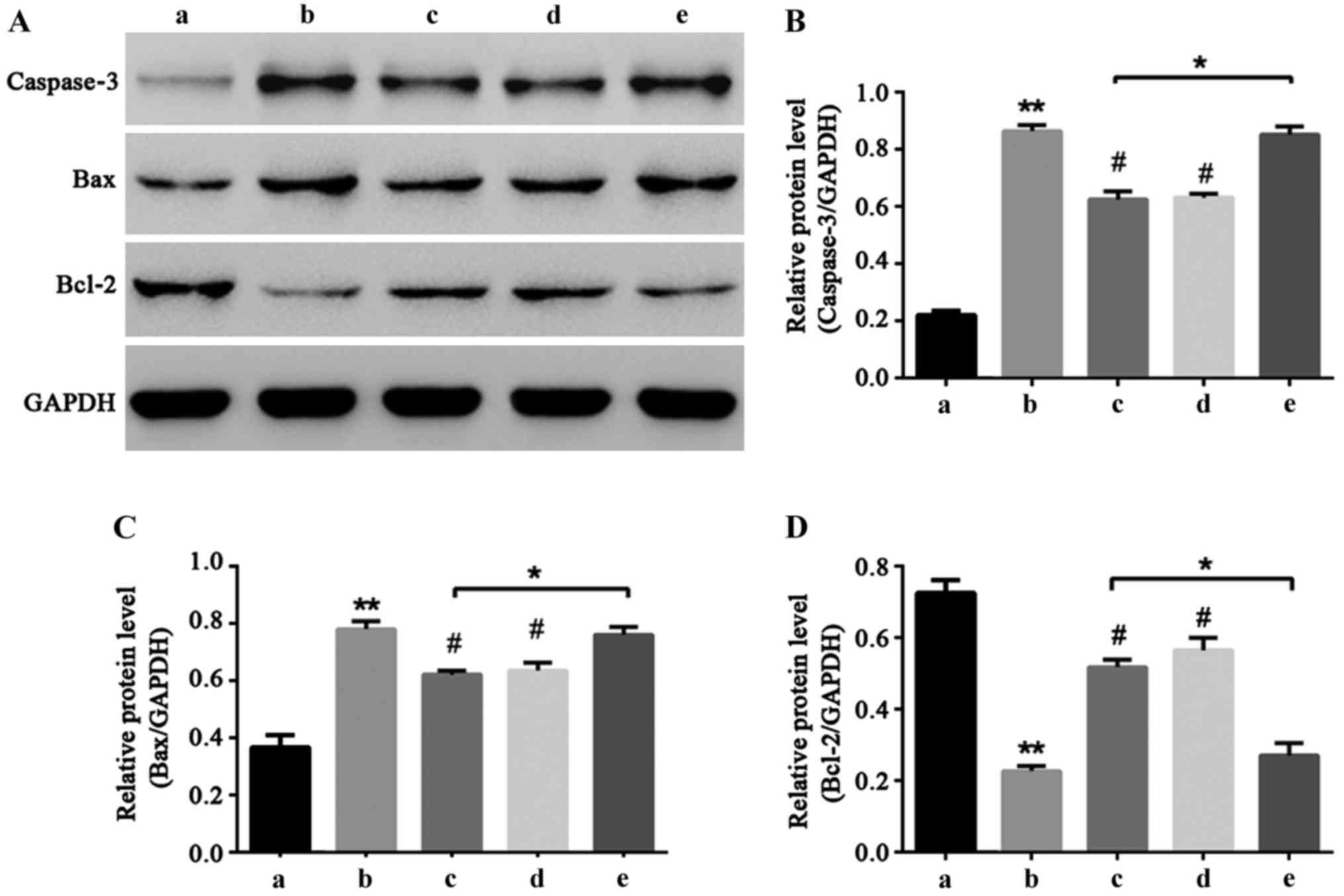|
1
|
Hatano T, Yasuhara T, Miyamoto K and Okuda
T: Anti-human immunodeficiency virus phenolics from licorice. Chem
Pharm Bull (Tokyo). 36:2286–2288. 1988. View Article : Google Scholar : PubMed/NCBI
|
|
2
|
Kelly-Pieper K, Patil SP, Busse P, Yang N,
Sampson H, Li XM, Wisnivesky JP and Kattan M: Safety and
tolerability of an antiasthma herbal Formula (ASHMI) in adult
subjects with asthma: A randomized, double-blinded,
placebo-controlled, dose-escalation phase I study. J Altern
Complement Med. 15:735–743. 2009. View Article : Google Scholar : PubMed/NCBI
|
|
3
|
Whorwood CB, Sheppard MC and Stewart PM:
Licorice inhibits 11 beta-hydroxysteroid dehydrogenase messenger
ribonucleic acid levels and potentiates glucocorticoid hormone
action. Endocrinology. 132:2287–2292. 1993. View Article : Google Scholar : PubMed/NCBI
|
|
4
|
Tamir S, Eizenberg M, Somjen D, Stern N,
Shelach R, Kaye A and Vaya J: Estrogenic and antiproliferative
properties of glabridin from licorice in human breast cancer cells.
Cancer Res. 60:5704–5709. 2000.PubMed/NCBI
|
|
5
|
Hatano T, Shintani Y, Aga Y, Shiota S,
Tsuchiya T and Yoshida T: Phenolic constituents of licorice. VIII.
Structures of glicophenone and glicoisoflavanone, and effects of
licorice phenolics on methicillin-resistant Staphylococcus aureus.
Chem Pharm Bull (Tokyo). 48:1286–1292. 2000. View Article : Google Scholar : PubMed/NCBI
|
|
6
|
Sun YX, Tang Y, Wu AL, Liu T, Dai XL,
Zheng QS and Wang ZB: Neuroprotective effect of liquiritin against
focal cerebral ischemia/reperfusion in mice via its antioxidant and
antiapoptosis properties. J Asian Nat Prod Res. 12:1051–1060. 2010.
View Article : Google Scholar : PubMed/NCBI
|
|
7
|
Takahashi T, Takasuka N, Iigo M, Baba M,
Nishino H, Tsuda H and Okuyama T: Isoliquiritigenin, a flavonoid
from licorice, reduces prostaglandin E2 and nitric oxide, causes
apoptosis, and suppresses aberrant crypt foci development. Cancer
Sci. 95:448–453. 2004. View Article : Google Scholar : PubMed/NCBI
|
|
8
|
Zhang X, Song Y, Han X, Feng L, Wang R,
Zhang M, Zhu M, Jia X and Hu S: Liquiritin attenuates advanced
glycation end products-induced endothelial dysfunction via
RAGE/NF-κB pathway in human umbilical vein endothelial cells. Mol
Cell Biochem. 374:191–201. 2013. View Article : Google Scholar : PubMed/NCBI
|
|
9
|
Feng L, Zhu MM, Zhang MH, Wang RS, Tan XB,
Song J, Ding SM, Jia XB and Hu SY: Protection of glycyrrhizic acid
against AGEs-induced endothelial dysfunction through inhibiting
RAGE/NF-κB pathway activation in human umbilical vein endothelial
cells. J Ethnopharmacol. 148:27–36. 2013. View Article : Google Scholar : PubMed/NCBI
|
|
10
|
Guoqiang Q and Guoping Z: Optimal
proportion of four effective components of Danggui Decoction on
vascular endothelial cell protection in rats with myocardial
ischemia reperfusion injury. Tradit Chin Med Mater. 34:580–584.
2011.(In Chinese).
|
|
11
|
Guan Y, Li FF, Hong L, Yan XF, Tan GL, He
JS, Dong XW, Bao MJ and Xie QM: Protective effects of liquiritin
apioside on cigarette smoke-induced lung epithelial cell injury.
Fundam Clin Pharmacol. 26:473–483. 2012. View Article : Google Scholar : PubMed/NCBI
|
|
12
|
Koshimizu JY, Beltrame FL, de Pizzol JP
Jr, Cerri PS, Caneguim BH and Sasso-Cerri E: NF-κB overexpression
and decreased immunoexpression of AR in the muscular layer is
related to structural damages and apoptosis in cimetidine-treated
rat vas deferens. Reprod Biol Endocrinol. 11:292013. View Article : Google Scholar : PubMed/NCBI
|
|
13
|
Arora R, Yates C, Gary BD, McClellan S,
Tan M, Xi Y, Reed E, Piazza GA, Owen LB and Dean-Colomb W:
Panepoxydone targets NF-κB and FOXM1 to inhibit proliferation,
induce apoptosis and reverse epithelial to mesenchymal transition
in breast cancer. PLoS One. 9:e983702014. View Article : Google Scholar : PubMed/NCBI
|
|
14
|
Decean H, Fischer-Fodor E, Tatomir C,
Perde-Schrepler M, Somfelean L, Burz C, Hodor T, Orasan R and Virag
P: Vitis vinifera seeds extract for the modulation of cytosolic
factors BAX-α and NF-κB involved in UVB-induced oxidative stress
and apoptosis of human skin cells. Clujul Med. 89:72–81. 2016.
View Article : Google Scholar : PubMed/NCBI
|
|
15
|
Zuo N, Zheng X, Liu H and Ma X:
Fenofibrate, a PPARα agonist, protect proximal tubular cells from
albumin-bound fatty acids induced apoptosis via the activation of
NF-κB. Int J Clin Exp Pathol. 8:10653–10661. 2015.PubMed/NCBI
|
|
16
|
Nicholson DW and Thornberry NA: Caspases:
Killer proteases. Trends Biochem Sci. 22:299–306. 1997. View Article : Google Scholar : PubMed/NCBI
|
|
17
|
Shi L, Teng H, Zhu M, Li C, Huang K, Chen
BI, Dai Y and Wang J: Paeoniflorin inhibits nucleus pulposus cell
apoptosis by regulating the expression of Bcl-2 family proteins and
caspase-9 in a rabbit model of intervertebral disc degeneration.
Exp Ther Med. 10:257–262. 2015. View Article : Google Scholar : PubMed/NCBI
|
|
18
|
Liu Z, Ding Y, Ye N, Wild C, Chen H and
Zhou J: Direct activation of bax protein for cancer therapy. Med
Res Rev. 36:313–341. 2016. View Article : Google Scholar : PubMed/NCBI
|
|
19
|
Jing H and Lee S: NF-κB in cellular
senescence and cancer treatment. Mol Cells. 37:189–195. 2014.
View Article : Google Scholar : PubMed/NCBI
|
|
20
|
Wier EM, Fu K, Hodgson A, Sun X and Wan F:
Caspase-3 cleaved p65 fragment dampens NF-κB-mediated
anti-apoptotic transcription by interfering with the p65/RPS3
interaction. FEBS Lett. 589:3581–3587. 2015. View Article : Google Scholar : PubMed/NCBI
|
|
21
|
Cao ZH, Yin WD, Zheng QY, Feng SL, Xu GL
and Zhang KQ: Caspase-3 is involved in IFN-γ- and TNF-α-mediated
MIN6 cells apoptosis via NF-κB/Bcl-2 pathway. Cell Biochem Biophys.
67:1239–1248. 2013. View Article : Google Scholar : PubMed/NCBI
|



